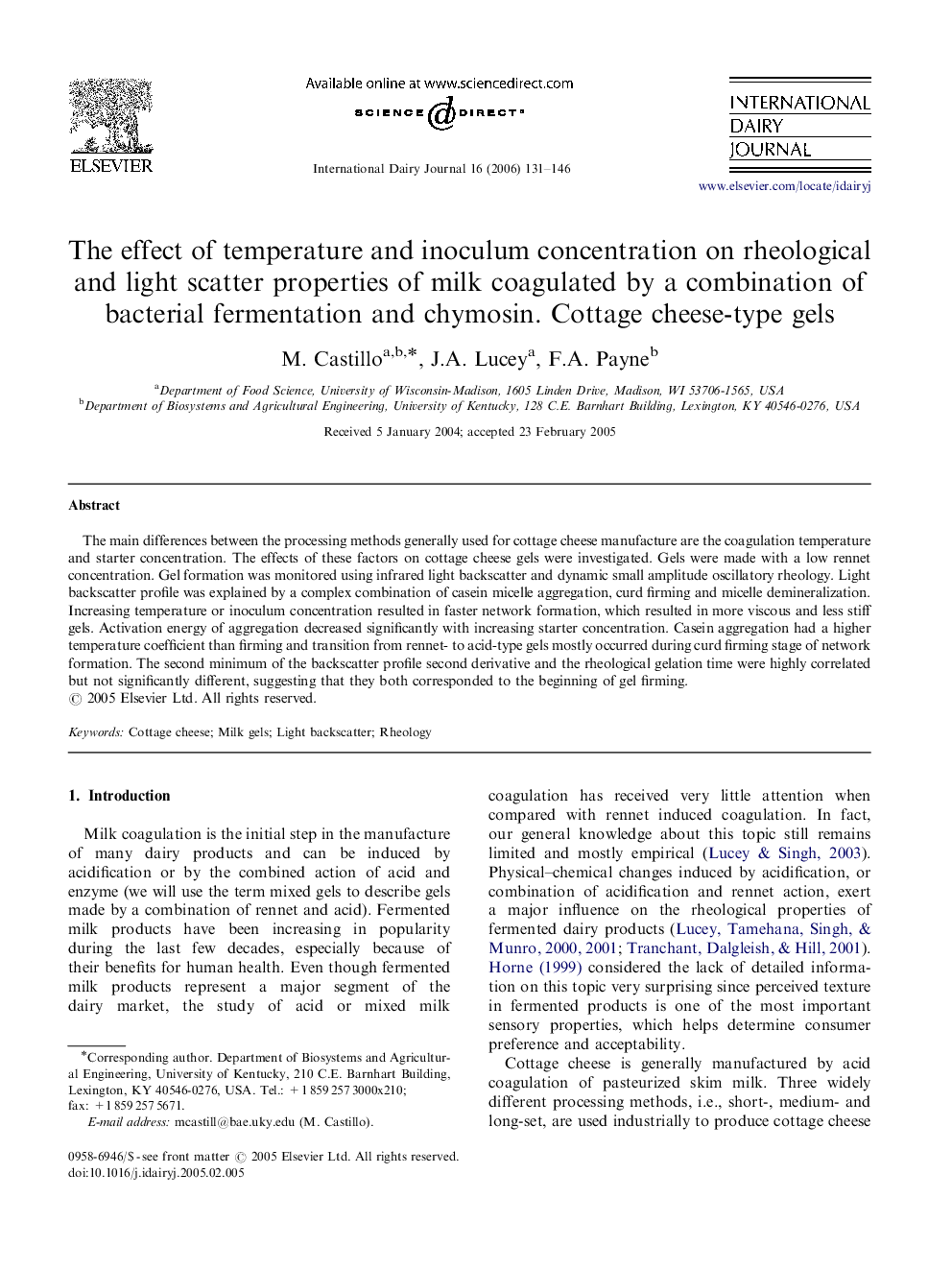| Article ID | Journal | Published Year | Pages | File Type |
|---|---|---|---|---|
| 2435642 | International Dairy Journal | 2006 | 16 Pages |
The main differences between the processing methods generally used for cottage cheese manufacture are the coagulation temperature and starter concentration. The effects of these factors on cottage cheese gels were investigated. Gels were made with a low rennet concentration. Gel formation was monitored using infrared light backscatter and dynamic small amplitude oscillatory rheology. Light backscatter profile was explained by a complex combination of casein micelle aggregation, curd firming and micelle demineralization. Increasing temperature or inoculum concentration resulted in faster network formation, which resulted in more viscous and less stiff gels. Activation energy of aggregation decreased significantly with increasing starter concentration. Casein aggregation had a higher temperature coefficient than firming and transition from rennet- to acid-type gels mostly occurred during curd firming stage of network formation. The second minimum of the backscatter profile second derivative and the rheological gelation time were highly correlated but not significantly different, suggesting that they both corresponded to the beginning of gel firming.
